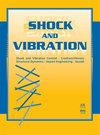Modelling Friction-Induced Dynamic Instability Dedicated for Isogeometric Formulation
IF 1.2
4区 工程技术
Q3 ACOUSTICS
引用次数: 0
Abstract
Flutter-type dynamic instability induced by friction is a highly nonlinear phenomenon and computationally expensive to model through transient analysis. An efficient way to make inference of such instabilities in a dynamical system is through analyzing the first-order effect of a perturbation at one of its equilibrium with eigenvalue analysis. The contact characteristics of such dynamical systems are typically modelled through the normal compliance approach with inference from experiments. In this case, the dynamical response of the system is implied to be sensitive to the contact stiffness modelled through the normal compliance approach. Typically, with the normal compliance approach, the continuum of the contact interface is approximated through a set of nonlinear springs which can be interpreted as a collocation method. Such approximations or the numerical implication of contact formulations in general for such problems is not largely studied. We focus on a variational formulation-based contact formulation without domain decomposition which is computationally efficient with small sacrifice in accuracy, where we imply that the dynamical response can be robustly modelled with the given accuracy. Further, we expose the inadequacy of the collocation method for such problems, where the dynamical system is observed to be sensitive to the extent of inaccuracy as a result of collocation for low values of contact stiffness. The inferences numerically imply the characteristics of the dynamical system for variation in contact stiffness.针对等几何公式的摩擦动力失稳建模
摩擦引起的颤振型动力失稳是一种高度非线性的现象,通过瞬态分析建模计算成本很高。对动力系统的不稳定性进行推断的一种有效方法是用特征值分析方法分析其平衡点上扰动的一阶效应。这种动力系统的接触特性通常是通过常规柔度方法和实验推断来建模的。在这种情况下,系统的动态响应意味着对通过正常柔度方法建模的接触刚度敏感。通常,在正柔度法中,接触界面的连续体是通过一组非线性弹簧来近似的,这可以解释为一种配点法。对于此类问题的这种近似或一般接触公式的数值含义并没有进行大量的研究。我们重点研究了一种基于变分公式的无域分解接触公式,该公式计算效率高,精度牺牲小,其中我们意味着动态响应可以在给定精度下进行鲁棒建模。此外,我们揭示了配置方法在这类问题中的不足之处,其中动态系统被观察到由于低接触刚度值的配置而对不准确程度敏感。这些推论在数值上暗示了动力系统在接触刚度变化时的特性。
本文章由计算机程序翻译,如有差异,请以英文原文为准。
求助全文
约1分钟内获得全文
求助全文
来源期刊

Shock and Vibration
物理-工程:机械
CiteScore
3.40
自引率
6.20%
发文量
384
审稿时长
3 months
期刊介绍:
Shock and Vibration publishes papers on all aspects of shock and vibration, especially in relation to civil, mechanical and aerospace engineering applications, as well as transport, materials and geoscience. Papers may be theoretical or experimental, and either fundamental or highly applied.
 求助内容:
求助内容: 应助结果提醒方式:
应助结果提醒方式:


